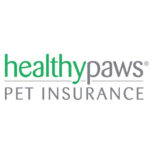Best Pet Insurance For Labradoodles In 2025
From my standpoint, Healthy Paws provides the top customized pet insurance for Labradoodles owners.
We’ve saved shoppers an average of $350 per year on their pet insurance.
An alarming 80% of pet owners can’t afford an unexpected $500 vet bill, which is exactly where pet insurance offers vital financial protection.
In this article, we’ll examine the top pet insurance companies for Labradoodles to help you select the right coverage. Similar to health insurance, pet coverage offers better care choices while minimizing out-of-pocket costs.
Best Pet Insurance Companies For Labradoodles, 2025
Various pet insurance companies designed for Labradoodles share common objectives of caring for your pet's health and supporting financially, but they also have their differences. What suits one pet may not be the best for another. Here are the top pet insurance options for Labradoodles:



Compare The Best Pet Insurance Companies For Labradoodles
After examining the top pet insurance options for Labradoodles, it's apparent that several reputable companies are contending for the leading positions. Each company also offers its own unique advantages. Here's a concise overview to provide you with insights into each insurer.
| Overall Rating | Best For | Waiting Period | Reimbursement % | Benefit Limit | Get A Quote | |
|---|---|---|---|---|---|---|
| Healthy Paws |
|
Overall |
15 days accident/illness |
70%, 80%, 90% |
Unlimited annual and lifetime |
Instant Quote |
| Lemonade |
|
Cheap |
2 days accident, 14 days illness |
70%, 80%, 90% |
$5,000 to $100,000 annually |
Instant Quote |
| Many Pets |
|
Puppies |
15 days accident/illness |
70% or 80% (Most States) |
Unlimited annual and lifetime |
Instant Quote |
| Pumpkin |
|
Older Dogs |
14 days accident/illness |
90% |
$10,000, $20,000 or unlimited |
Instant Quote |
| Spot |
|
Multiple Pets |
14 days accident/illness |
70%, 80%, 90% |
$2,500 to unlimited |
Instant Quote |
Our Methodology
The assessments and resulting ratings were based on reviewing insurer websites, analyzing customer reviews, consulting other review platforms, and drawing from personal experiences with pet insurance.
Quotes Analyzed
Years Of Industry Experience
Brands Reviewed
Research Hours
Detailed Reviews Of The Best Labradoodle Insurance Companies
Best Overall
Key Statistics
Why We Like Them
⇅Healthy Paws is the top choice for pet insurance, offering unlimited claim payouts and no per-incident caps or restrictions. While it might be a higher investment, its value is in avoiding policy-related tough decisions. The policy is straightforward, without costly extras, and allows you to see any licensed vet. Filing claims is simple through their mobile app or website, with most resolved within two days.
Benefits & Drawbacks
⇅- Unrestricted reimbursements yearly and over a lifetime.
- . Majority of claims resolved promptly within 48 hours.
- 30 days to get your money back
- Ability to directly reimburse veterinarians. ✓
- Missing routine wellness plan selection ✘
Runner-Up For Best Overall
Key Statistics
Why We Like Them
⇅Lemonade offers the most budget-friendly pet insurance for Labradoodles, with coverage limits comparable to other providers but falling short of the unlimited coverage from Healthy Paws. Lemonade’s coverage options range from $5,000 to $100,000 annually, with premiums increasing based on the selected limit. Their standard policy covers accidents and illnesses, including cancer, heart disease, skin conditions, fractures, and hip dysplasia, a common issue in older Labradoodles. However, like most insurers, Lemonade does not cover preexisting conditions, dental issues, behavioral matters, or elective surgeries.
Benefits & Drawbacks
⇅- Take part in an available health and wellness option.
- Two days is all it takes after an accident to begin receiving benefits.
- Enjoy a 10% discount by bundling pet insurance with your Lemonade home, renters, or car insurance coverage. ✓
- The pet telehealth hotline isn't active 24 hours a day.
- Vet check-up fees encompass an additional fee.
- Prescription food and microchipping are not eligible under the policy, unfortunately. ✘
Best For Puppies
Key Statistics
Why We Like Them
⇅ManyPets offers the top coverage for puppies, with rates remaining steady despite pre-existing conditions. After 18 months, cured conditions might become eligible, and unrelated conditions can still qualify for coverage. Labradoodle puppies, like other playful dogs, are vulnerable to illnesses such as poisoning, swallowing foreign objects, and accidents. Early insurance helps reduce the likelihood of exclusions for pre-existing conditions as they mature.
Benefits & Drawbacks
⇅- Available across a wide span of states, surpassing 40.
- Provides alternative health care options.
- Covers costs for vet visits, encompassing both sickness and accidents. ✓
- A continuous telehealth line for pet care isn't offered.
- This policy excludes therapy for pet behavior.
- I'm sorry to say, alternative therapies are not covered. ✘
Best For Older Dogs
Key Statistics
Why We Like Them
⇅As Labradoodles grow older, they can develop genetic problems such as cruciate ligament tears and hip dysplasia, which can lead to expensive treatments. Pumpkin covers these conditions immediately and includes vet exam fees for senior Labradoodles. They offer coverage for surgeries, dental care, and other potential health issues. Pumpkin gives you a choice of three deductibles and usually reimburses 90% of eligible costs.
Benefits & Drawbacks
⇅- Select to participate in an available wellness package.
- Receive savings on pet insurance when you insure more than one pet.
- Benefit from a substantial 90% refund on dogs and cats aged 8 weeks and up. ✓
- There is currently no 24/7 pet telehealth line in place.
- We apologize, but there isn't an accident-only plan included in the choices. ✘
Best For Multiple Pets
Key Statistics
Why We Like Them
⇅Labradoodles’ friendly temperament often results in owners having more than one pet. Spot offers a 10% discount if you insure multiple pets, allowing for considerable savings. Their preventive care plan covers wellness needs such as annual check-ups, fecal exams, teeth cleaning, and some vaccines. They also provide a 30-day money-back guarantee if you’re not satisfied with their service. Spot reimburses up to 90% of eligible vet bills and has a 24/7 helpline. You can visit any licensed vet or specialist in the U.S.
Benefits & Drawbacks
⇅- Offers microchip insertion solutions.
- Gives the option of a $100 deductible amount.
- Offers a pet telehealth service that's accessible around the clock. ✓
- Accidents have a 14-day waiting period, while some primary competitors observe only a 2-day period. ✘
How To Find The Best Pet Insurance Company For You
Given the wide range of costs and coverage options among pet insurance providers, selecting the right plan can be tricky. To help you identify the best option for your pet, consider the following guidelines before you decide:
Check Whether Your Pet Is Eligible
Most insurance companies require puppies and kittens to be at least 6 to 10 weeks old to obtain coverage. Some providers may not allow senior pets for initial enrollment or may restrict them to accident coverage only. However, once your pet is insured, most plans provide lifelong coverage as long as premium payments are maintained.
Research What’s Covered
In general, pet insurance plans cover the costs associated with surgeries, hospital stays, and medications for sick or injured pets. However, there are certain services that some companies may charge extra for or not cover at all. Here are a few examples:
- Exam fees: For example, if your dog has a broken leg, while some plans might cover X-rays, surgery, and pain medication, they may not cover the vet’s check-up fee.
- Alternative treatments and rehab: Some insurance plans cover alternative therapies, like acupuncture and physical rehabilitation, while others might charge extra for them.
- Behavioral therapies: Many plans do not provide coverage for treatments related to behavioral issues such as aggression.
- Prescription food: Certain plans might exclude prescription diets or supplements even if they are recommended by a veterinarian for a covered issue.
- Dental care: Coverage for dental issues can vary widely. Some plans might not cover conditions like gum disease or tooth problems, and coverage may depend on recent dental cleanings. Some wellness add-ons may include coverage for dental cleaning. Finally, remember that pet insurance typically does not cover pre-existing conditions, cosmetic procedures, or expenses related to breeding.
Decide How Much Coverage You Want
While most pet insurance plans impose an annual payout limit, some allow for unlimited coverage. It’s essential for you to choose a coverage level that provides you with confidence in managing vet expenses. If your dog or cat remains healthy, you might go years without needing more than routine checkups. However, unforeseen surgeries or significant illnesses can result in bills that add up to thousands of dollars.
Understand Reimbursements And Deductibles
Most pet insurance plans will reimburse you for part of your veterinary bills. When you enroll, you typically select a reimbursement rate, such as 70%, 80%, or 90%. However, some plans impose fixed fees for specific treatments, which might not cover the full amount your vet charges, meaning you’ll need to pay the difference.
Almost all policies include a deductible, which is the amount you pay before the insurance starts to cover costs. You usually have options for different deductible amounts, such as $100 or $250. Some plans may require a separate deductible for each condition, while most only require it to be paid once each year.
In general, opting for a lower deductible and higher reimbursement will result in higher premiums, while a higher deductible with lower reimbursement will reduce your premiums.
Check Waiting Periods
Upon purchasing a policy, there’s typically a brief waiting period of about 14 days before full coverage for accidents and illnesses kicks in. During this time, treatments are not covered. Longer waiting periods may be imposed for certain conditions like cruciate ligament injuries, which affect a dog’s knee stability and movement.
Examine Extra Costs
A few pet insurance companies provide coverage for routine services such as check-ups and vaccinations. While this may seem appealing, it’s crucial to evaluate if the additional cost is justified. Compare the annual expense of the wellness insurance plan to your typical annual expenditure on these services. Make sure to review the specifics carefully, as definitions of “wellness” can differ among pet insurance providers.
Compare Quotes
The cost of pet insurance varies with the provider and the coverage level chosen. Some insurers offer discounts when you insure multiple pets, potentially saving you money. However, discounts alone don’t ensure the best plan. To find the right insurance for your pet, it’s crucial to research and compare quotes from different plans. Make sure your comparison is impartial, taking into account coverage levels, deductibles, and reimbursement limits.
Average Cost Of Pet Insurance For Labradoodles
| Company | Deductible | Annual Reimbursement % | Monthly Price | Age Of Dog |
| Healthy Paws | $500 | 70% | $71 | 5 year old |
| Lemonade | $500 | 70% | $42 | 5 year old |
| Spot | $500 | 70% | $76 | 5 year old |
| Healthy Paws | $500 | 80% | $32 | 1 year old |
| Lemonade | $500 | 80% | $21 | 1 year old |
| Spot | $500 | 80% | $56 | 1 year old |
| Healthy Paws | $500 | 70% | $37 | 3 month old |
| Lemonade | $500 | 70% | $28 | 3 month old |
| Spot | $500 | 70% | $83 | 3 month old |
Average Cost Of Typical Vet Procedures
| Typical Vet Procedure | Average Cost Of Procedure |
| Puppy vaccinations | $75-100 |
| Flea & tick prevention | $40-200 |
| Heartworm prevention | $24-120 |
| Spay or neuter surgery | $200-800 |
| Annual exam | $240-600 |
| Teeth cleaning | $200-500 |
| Microchip | $40 |
Average Cost Of Emergency Vet Procedures
| Emergency Pet Procedure | Average Cost Of Procedure |
| General consultation/exam | $100-$150 |
| General bloodwork | $80-200 |
| X-rays | $150-$250 |
| Ultrasound | $300-$600 |
| 1-2 day hospitalization | $600-$1,700 |
| 3-5 day hospitalization | $1,500-$3,500 |
| Wound treatment & repair | $800-$1,500 |
| Emergency surgery | $800-$2,500 |
| Oxygen therapy | $500 |
Labradoodles often face hip dysplasia, allergies, and ear infections. With PolicyOwl, you can upload your current policy and instantly see if your coverage matches your dog’s needs.
Is Pet Insurance Worth It For Labradoodles?
Pet insurance acts as a safeguard against unexpected veterinary expenses. While many pet owners can pay for their pets’ medical care, a notable number of Americans struggle with a $1,500 emergency vet bill. The right pet insurance provides a safety net that enables you to focus on your furry family member’s health rather than financial concerns.
The worth of pet insurance depends on your expectations. If your pet is currently being treated for a chronic illness and you hope to receive help with those costs, you might find yourself disappointed, as none of the companies in our review cover pre-existing conditions. However, if you understand your policy and its coverage, aligning it with your budget and needs, you’re more likely to see it as a valuable investment.
Common Health Issues For Labradoodles
Purebred Labradoodles are known for having breed-specific health concerns, many of which stem from genetic issues. In some cases, these problems are the result of breeding practices that have overlooked genetic factors, leading to widespread health challenges in the Labradoodle breed. Compared to other dogs, Labradoodles are more susceptible to genetic health problems. Here are some common issues:
- Cancer (Oral Melanoma, Mast Cell Tumors)
- Brachycephalic Obstructive Airway Syndrome (BOAS)
- Patellar Luxation
- Hip Dysplasia, Legg-Calvé-Perthes Disease
- Corneal Ulcers, Entropion, Dry Eye
- Skin Fold Dermatitis, Infections
Factors That Impact Cost Of Your Pet Insurance Policy
Similar to health insurance, the cost of your pet insurance can fluctuate based on several specific factors:
- Location: Pet insurance companies assess local veterinary care costs when pricing your policy.
- Pet’s Age: Older pets are typically at a greater risk for health issues, leading to higher premiums.
- Pet’s Breed: Some breeds are more susceptible to certain health problems. For example, bulldogs and Boston terriers often struggle with breathing issues, while larger breeds like Pugs face a higher risk of hip dysplasia. These breed-related concerns can affect the price of your pet insurance.
- Deductibles, Coinsurance, and Coverage Limits: If you want to minimize your out-of-pocket costs for your pet’s care, your insurance premiums will generally be higher. Choosing a $100 deductible instead of a $500 one will speed up your reimbursements but will also raise your premiums.
FAQs
Is pet insurance cheaper for purebred dogs?
The genetic predispositions of purebred dogs often result in costly health issues, thus leading to higher insurance premiums than those for mixed-breed dogs.
What is the average cost of owning a Labradoodle?
In the first year, the initial expenses sum up to about $3,000, including vaccinations, food, grooming, and insurance. Yet, annual costs decrease to approximately $1,900 in subsequent years.
What insurance do you need for a dog?
Pet insurance can help dog owners manage veterinary expenses and maintain their dogs’ well-being.
Sources
⇅